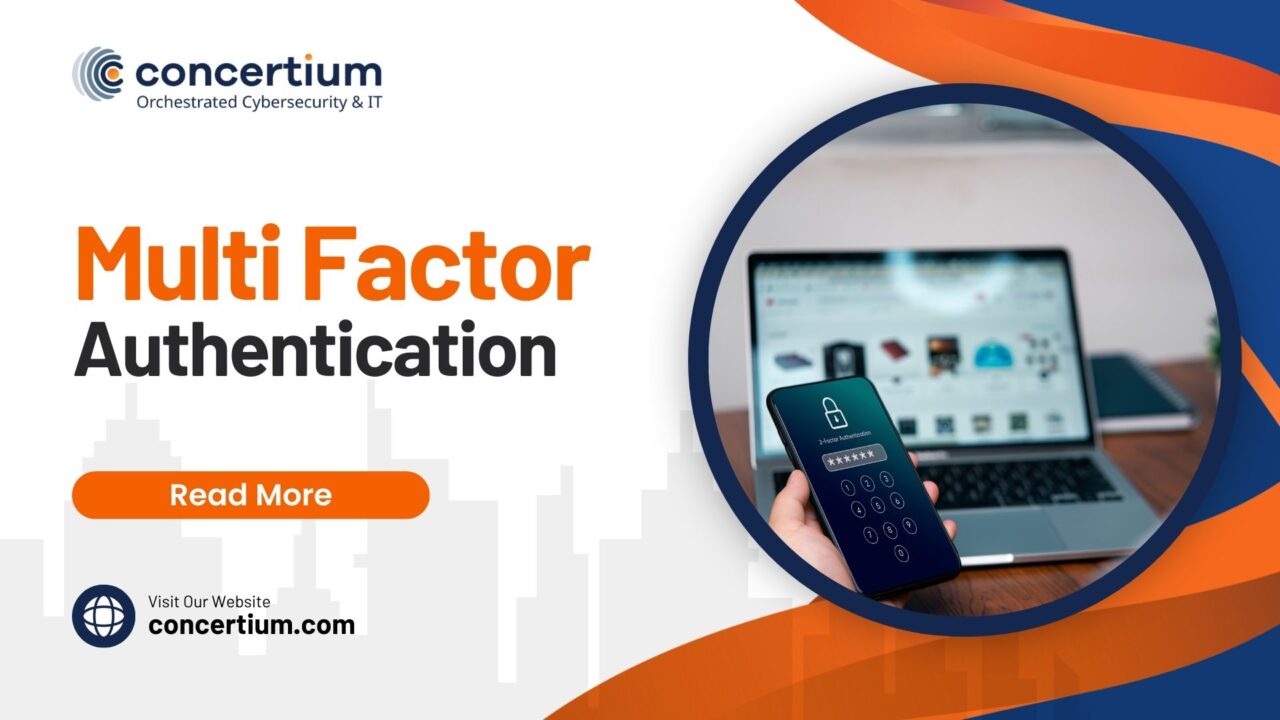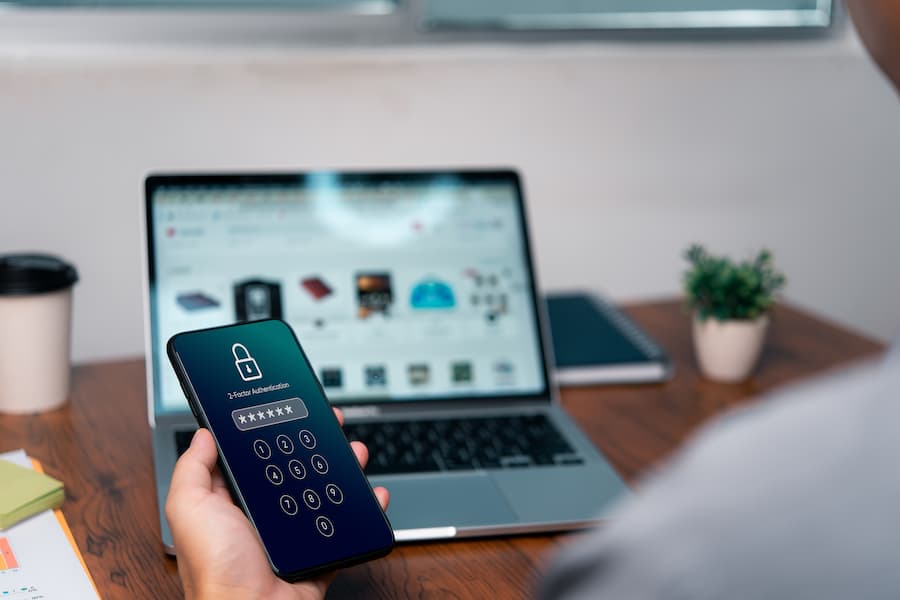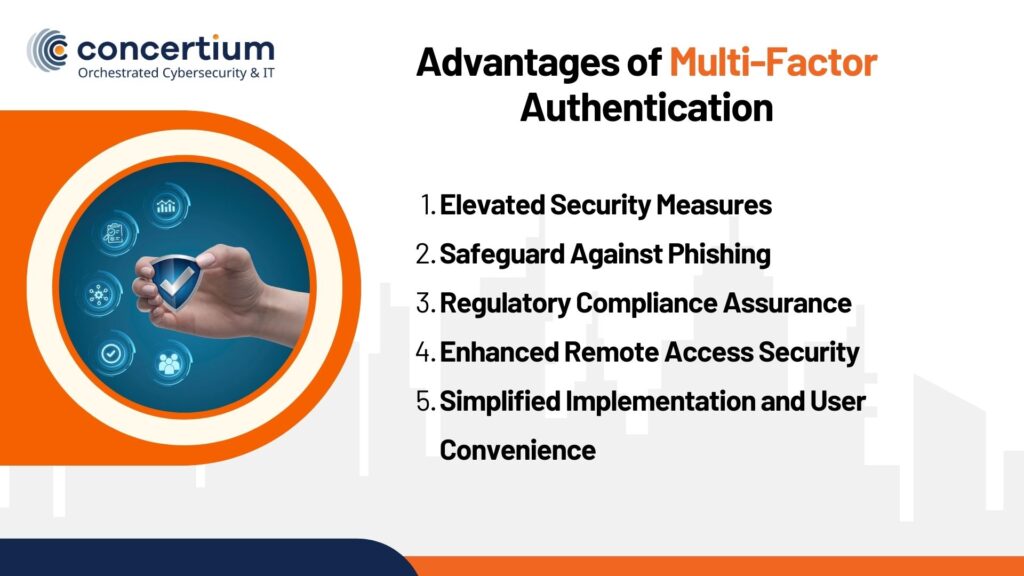Multi Factor Authentication (MFA), a base of contemporary cybersecurity, significantly amplifies protection by incorporating multiple verification layers. This system ensures that the user must provide several proofs of identity before gaining access. Initially, authentication relied heavily on one factor, typically a password.
However, the evolution of digital threats necessitated a more robust defense. Today, MFA stands as a bulwark against unauthorized access, weaving together a tapestry of credentials far beyond the traditional username and password duo.
What is Multi Factor Authentication?
Why MFA is Essential for Security?
The crux of single-factor authentication’s limitation lies in its simplicity: it depends solely on something you know. However, this simplicity also renders it vulnerable to phishing attacks and credential theft. MFA, on the other hand, fortifies security by demanding additional proofs of identity, categorized as knowledge, possession, and inherence.
For instance, alongside a password, a user may need to present a security key or undergo biometric verification. This multiplicity of requirements drastically reduces the risk of unauthorized entry, making MFA an indispensable ally in the digital age.
How Does MFA Work?
MFA operates on the principle that the more hurdles presented in the verification process, the less likely it is for an intruder to gain unauthorized access. In other words, it combines something you know (like a password), something you have (such as a mobile device or software tokens), and something you are (like fingerprint or facial recognition).
Above all, these layers ensure that compromising one factor won’t breach the system. Adaptive authentication further enhances this by adjusting security measures based on the context, like login time or device used. For instance, accessing sensitive information from a new device might trigger the request for a code from an authenticator app on your mobile phone, adding additional security. Explore the National Institute of Standards and Technology (NIST) guide for more in-depth insights into how MFA protects sensitive data.
By employing various authentication factors, MFA creates a dynamic and nearly impenetrable shield around digital assets. Whether it’s a software token, a biometric scan, or a security key, each additional layer enhances security exponentially. Therefore, in the ever-evolving battle against cyber threats, MFA stands as a critical, user-friendly fortress safeguarding our most valuable digital treasures.
Types of MFA Methods: Enhancing Digital Security
Multi factor Authentication (MFA) enriches security protocols by integrating multiple verification steps into the authentication process. This approach significantly diminishes the likelihood of unauthorized access, making it a critical component in safeguarding digital assets. Here are some types of MFA method
Hardware Tokens and Smart Cards
One foundational form of authentication involves hardware tokens and smart cards, tangible objects that a user must possess to gain access. These devices generate a temporary, one-time code, acting as a possession factor in the authentication system. Such tokens and cards provide a robust layer of security, as they require physical possession by the user.
Mobile App Authenticators
Mobile apps, including Google Authenticator and Microsoft Authenticator, offer a convenient yet secure method for two-factor authentication (2FA). By generating dynamic access codes on a user’s smartphone, these apps ensure that merely knowing a password isn’t enough for an intruder to breach an account.
Biometric Authentication
Biometric methods delve deeper into personal identification by using unique physical or behavioral traits, such as fingerprints, facial recognition, and iris scans. This sophisticated form of authentication is increasingly prevalent due to its ability to offer high security without significant inconvenience to the user.
Adaptive and Risk-Based Authentication
Adaptive MFA tailors security requirements based on contextual information like user location, device used, or time of access attempt. This flexibility enhances user experience without compromising security. Risk-based authentication further refines this by adjusting the authentication process dynamically, based on the assessed risk level of each access attempt. It represents a pinnacle in customizing security measures, ensuring that safeguards are proportionate to the potential threat.
As digital threats evolve, so too do the methods to counteract them. MFA, especially with its diverse modalities—ranging from physical tokens and mobile apps to cutting-edge biometric and adaptive techniques—offers a comprehensive shield against unauthorized access. By layering different types of authentication, from two-factor to multifactor, organizations can significantly enhance their security posture, protecting sensitive information from increasingly sophisticated cyber threats.
The Role of AI and Machine Learning in MFA
AI and Machine Learning (ML) significantly bolster MFA’s effectiveness through adaptive authentication. These technologies scrutinize user behavior, spotting anomalies that might indicate a security threat.
By evaluating factors such as login time, geolocation, and device type, AI-driven MFA systems can implement real-time risk assessments, tailoring the authentication requirement to match the situation’s security needs. This adaptive multi-factor authentication ensures that security measures evolve as swiftly as cyber threats, providing a robust defense against unauthorized access.
Advantages of Multi Factor Authentication
Elevated Security Measures
Multi Factor Authentication (MFA) significantly enhances security by incorporating various verification methods. This multi-layered approach complicates unauthorized access attempts. Even if a cybercriminal cracks the username and password, they would still need to bypass an additional authentication hurdle to infiltrate the system.
Safeguard Against Phishing
MFA is a formidable defense against phishing and similar cyber threats. By demanding a secondary verification form, it ensures that the acquisition of a user’s password alone is insufficient for system access. This additional security layer acts as a critical barrier against cyberattacks.
Regulatory Compliance Assurance
Implementing MFA also aids organizations in adhering to stringent regulatory demands, such as HIPAA and PCI-DSS. These regulations often require robust security protocols, including MFA, to protect sensitive data effectively.
Enhanced Remote Access Security
As remote work becomes more prevalent, MFA offers a reliable solution for securing system access from any location. It guarantees that system access is restricted to authorized users, thereby mitigating the risks associated with remote connectivity.
Simplified Implementation and User Convenience
Despite its complex security benefits, MFA is straightforward to integrate with existing systems, allowing organizations to fortify their security measures with minimal hassle. Modern MFA methods, leveraging biometrics like fingerprint scans, facial recognition, or voice verification, offer user-friendly alternatives to traditional password systems, eliminating the need for complex passwords or physical tokens.
Challenges and Limitations of MFA
Despite its strengths, MFA faces challenges in balancing usability and security. Users may find multiple authentication factors cumbersome, especially if it impedes quick access to needed information. However, this inconvenience is a trade-off for enhanced security, protecting sensitive information from phishing attacks and unauthorized access.
Moreover, MFA systems are not impervious to vulnerabilities. For instance, SMS-based verification, once considered secure, has been exploited through SIM swap attacks. Therefore, maintaining the efficacy of MFA requires constant vigilance and updates to stay ahead of cybercriminals. Mitigation strategies include embracing more secure authentication methods like biometric verification and security keys, and educating users on the importance of security over convenience.
Incorporating adaptive MFA and leveraging AI for risk assessments can enhance security while minimizing impact on usability. As MFA continues to evolve, it will likely overcome many of these challenges, reaffirming its position as a critical component of modern cybersecurity strategies. Adopting MFA is a step toward a more secure digital environment, safeguarding data against an ever-growing array of cyber threats.
Future of MFA and Emerging Trends
The horizon for Multi-Factor Authentication (MFA) gleams with potential, largely thanks to standards like FIDO2. These frameworks aim to enhance security while ensuring user convenience. As technology progresses, biometrics will become more sophisticated, and passwordless authentication might become the norm.
Adaptive MFA solutions, which adjust security levels based on risk, are on the rise. This means systems could soon evaluate context, like location or device, to determine the authentication needed.
Optimizing Security with Multi-Factor Authentication: Top 5 Strategies
1. Fostering Awareness and Understanding
A pivotal aspect of rolling out Multi-Factor Authentication (MFA) is educating your team on its necessity. Addressing any concerns about MFA’s perceived inconvenience through clear communication is crucial. Highlight the rationale behind MFA’s implementation through emails and maintain an open dialogue with the IT department to facilitate a smooth transition.
2. Tailoring Policies to Your Environment
Crafting MFA policies that align with your organization’s unique needs is essential. Rather than blanket policies that might disrupt workflow, like frequent MFA prompts, adopt a nuanced approach. Assess the risk level of each access attempt and adjust MFA requirements accordingly, taking into account the nature of your industry and the sensitivity of accessible data.
3. Adapting to Risk-Based Authentication
Consider a risk-based authentication strategy to enhance user convenience without compromising security. This means not every login attempt necessitates MFA; for low-risk situations, a password and a one-time SMS code might suffice. For higher-risk logins, leverage more stringent authentication methods, ensuring security measures are proportional to potential threats.
4. Compliance with Regulatory Standards
MFA is not just a security enhancement; it’s often a compliance necessity. Regulations like the Payment Card Industry Data Security Standard (PCI DSS) and the Health Information Portability and Accountability Act (HIPAA) require robust authentication measures. Ensuring your MFA implementation meets these standards is critical for both security and compliance.
5. Preparing for Device Loss or Theft
Plan for scenarios where a device used for authentication is lost or stolen. Having a contingency plan, such as backup authentication methods or the ability to quickly disassociate the lost device from an account, minimizes the risk of unauthorized access and ensures uninterrupted access for users.
By integrating these best practices, organizations can effectively implement MFA, striking a balance between rigorous security and user convenience, ultimately safeguarding sensitive data against emerging cyber threats.
What People Also Ask
How safe is multi-factor authentication?
Multi-factor authentication (MFA) significantly enhances security by requiring multiple verification methods, making unauthorized access much harder. While not impervious to all cyber threats, it greatly reduces the risk of breaches compared to single-factor methods.
What are the benefits of MFA?
The benefits of MFA include enhanced security by adding layers of authentication, reducing the risk of unauthorized access, and complying with regulatory standards. It also offers protection against phishing attacks and secures remote access, improving overall data security.
Can 2 factor authentication be hacked?
Two-factor authentication (2FA) can be more secure than traditional passwords alone, but it’s not foolproof. Techniques like phishing, man-in-the-middle attacks, and SIM swapping can potentially compromise 2FA, though these require significant effort and specific conditions to succeed.
What are the 3 reasons MFA should be used?
Three key reasons to use MFA are to significantly increase security by adding multiple authentication layers, to protect against specific cyber threats like phishing and unauthorized access, and to meet compliance requirements for data protection in various industries.
Conclusion
In conclusion, MFA stands as a gaurd of digital security, evolving continually to outpace threats. With the integration of FIDO2 and other emerging trends, MFA becomes more robust and user-friendly. As we embrace adaptive MFA, passwordless methods, and enhanced biometrics, the future of authentication looks both secure and seamless. Adopting MFA is not just an upgrade; it’s a necessary step towards safeguarding our digital identities in an increasingly connected world.






